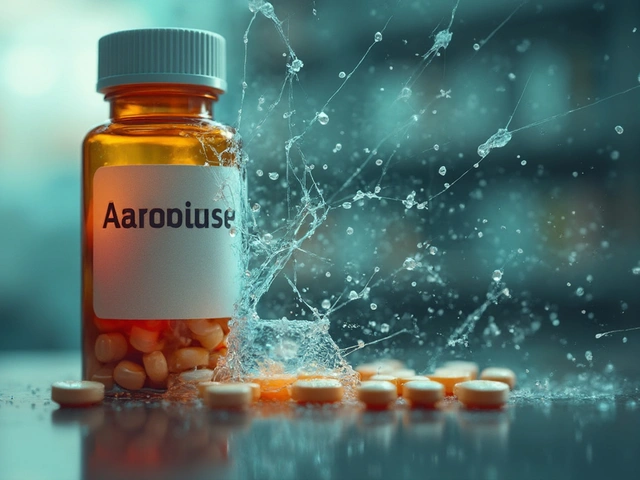Conjugated Estrogens
When working with Conjugated Estrogens, a natural‑source blend of estrogen hormones used to treat hormonal deficiencies. Also known as Premarin, it helps balance hormone levels during menopause and other conditions.
This therapy doesn’t exist in a vacuum. It requires a solid understanding of Hormone Replacement Therapy, the medical approach that supplements declining hormones to alleviate symptoms. HRT can involve estrogen alone, estrogen plus progesterone, or even low‑dose combinations, depending on a patient’s age, health status, and goals. The link between conjugated estrogens and HRT is direct: estrogen is the core ingredient that drives most of the symptom relief we see in menopausal care.
Why Understanding Conjugated Estrogens Matters
Women entering Menopause, the natural transition when ovarian production of estrogen drops sharply often face hot flashes, bone loss, and mood swings. Conjugated estrogens target these issues by binding to Estrogen Receptors, cellular proteins that trigger the body's response to estrogen. When the hormone binds, it activates pathways that maintain bone density, improve lipid profiles, and soothe vasomotor symptoms. In other words, the estrogen‑receptor interaction is the engine that powers the therapeutic effects of HRT.
Not every estrogen works the same way. Some compounds act as Selective Estrogen Receptor Modulators (SERMs), drugs that block estrogen receptors in some tissues while activating them in others. SERMs illustrate how nuanced hormone therapy can be: they aim to keep the benefits of estrogen in bone and heart while avoiding stimulation of breast tissue. Understanding this balance helps clinicians choose between pure conjugated estrogens and mixed regimens that include SERMs.
Safety is another piece of the puzzle. Research shows that dosage, delivery method (pill, patch, cream), and patient history all influence risk profiles for blood clots, stroke, and certain cancers. For example, oral conjugated estrogens undergo first‑pass metabolism in the liver, which can raise clotting factors, whereas transdermal patches bypass the liver and may carry lower clot risk. Knowing these pharmacokinetic nuances lets patients and providers tailor therapy to individual health needs.
Beyond symptom control, conjugated estrogens have metabolic effects. They can improve insulin sensitivity, modestly raise HDL cholesterol, and support vaginal health by maintaining mucosal thickness. These secondary benefits often factor into the decision‑making process, especially for women with pre‑existing cardiovascular concerns or osteoporosis risk.
Insurance coverage and prescribing guidelines also shape real‑world use. Many health plans require proof of menopausal symptoms or bone density loss before approving HRT, and doctors must document the rationale for starting estrogen therapy. This administrative layer doesn't change the biology, but it does affect how quickly patients can access treatment.
Below you’ll find a curated set of articles that dive deeper into each of these angles— from dosage tricks and delivery options to comparing conjugated estrogens with newer hormone formulations. Whether you’re starting therapy, adjusting a regimen, or simply want to understand the science, the posts ahead give practical, up‑to‑date insights.
Conjubrook (Conjugated Estrogens) vs Other HRT Options - Which Is Right for You?
A side‑by‑side look at Conjubrook (conjugated estrogens) versus other HRT options, covering pros, cons, safety and how to pick the best estrogen therapy for menopause.
Read





